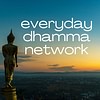nibbana
Kammaṭṭhāna - the basis of work - Ajahn Maha Boowa
This episode is a talk given by the Thai forest meditation master Ajahn Maha Boowa and is titled “Kammaṭṭhāna”. It was first publish as part of the book “kammaṭṭhāna - the basis of practice” which was translated by monks at Wat Pah Ban Taad. The Pali work kammaṭṭhāna literally means “the pl...
Listen Well | Ajahn Fuang Jotiko
This episode is a talk given by the Thai forest meditation master Ajahn Fuang Jotiko and is titled “Listen Well”. This talk isn’t just about listening the teachings, but also about developing our meditation so that we can develop our minds and achieve Awakening.It was first published on the website ...
The Marvel of the Dhamma | Ajahn Maha Boowa
This episode is a talk given by the Thai forest meditation master Ajahn Maha Boowa and is titled “The Marvel of the Dhamma”. It was first publish as part of the book “Straight from the Heart” which was translated by Thanissaro Bhikkhu. Copyright © Venerable Ācariya Mahā Boowa Ñāṇasampanno 1987 This ...
Reflection on Nibbana | Ajahn Tate
This episode is a talk given by the Thai forest meditation master Ajahn Tate and is titled “Reflection on Nibbana”. In this dhamma talk, Ajahn Tate reflects upon the profound peace and infinite benefit of the highest possible achievement - Nibbana. This teaching was translated by Steven Towler and w...
Let Your Aim Be Nibbana | Ajahn Chah
This episode is based on a talk given by esteemed forest meditation master Ajahn Chah Subhaddo and is titled Let Your Aim Be Nibbana. The original text can be found on Dhammatalks.net. The full translated text and more information can be found on the Forest Path Podcast webpage. This audio version i...





